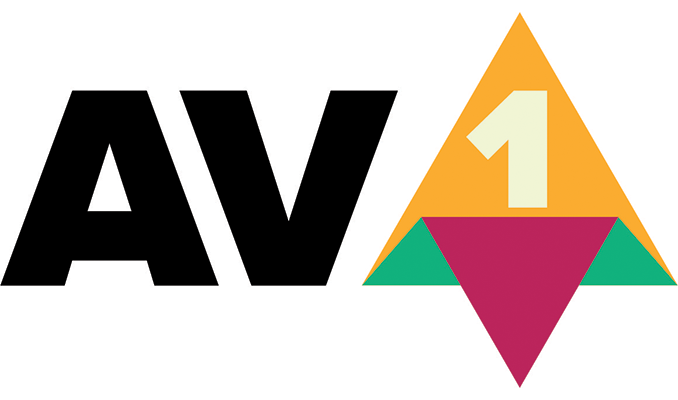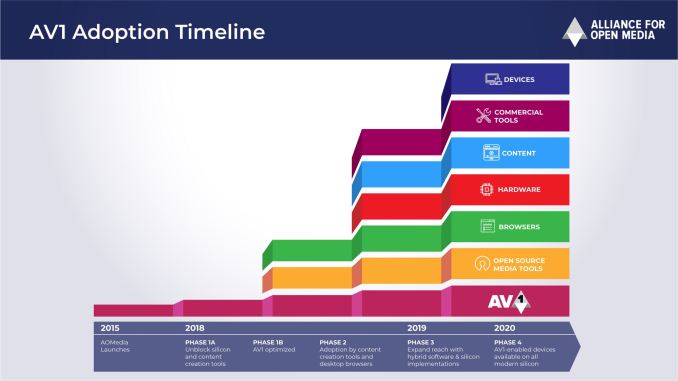YouTube, Netflix Publish First Videos Transcoded Using AV1
by Anton Shilov on September 14, 2018 1:00 PM EST
UPDATE: 9/14 5 PM ET: Adding information regarding Netflix videos transcoded using AV1.
YouTube has uploaded about a dozen videos that were transcoded using the AV1 codec, whcih was introduced earlier this year. The test sequences are expected to give Google as well as developers of browsers, decoders, and encoders an understanding how to better use the new royalty-free codec. Netflix is also testing AV1 codec and offers everyone a video in different resolutions and featuring various color depth.
To date, YouTube has added 14 videos transcoded using the AV1 codec to a special playlist. The list includes various types of content, including a talking-head program, musical clips, action videos, and demo footages from RED and Blackmagic Design. YouTube says that this type of content represents a large share of videos hosted by the service, so it makes a lot of sense for the company to learn how they behave on various devices in terms of performance, power consumption, and overall stability.
At present, AV1 support is available only in those Chrome 70 and Firefox Nightly builds released after September 12th. Meanwhile, the test videos use AV1 for resolutions that are lower than 480p, underscoring the fact that they are meant to test decoders that, for the moment, are going to be anything but optimized. This is on top of the fact that at the moment there are no hardware decoders that support AV1, so everything is being handled in software by the CPU to begin with. Eventually the codec will be used for content in 4K+ ultra-high-def resolutions, along with HDR and wide color gamuts.
Netflix's approach to the AV1 codec is a bit different. The company is offering just one video, but in from 432p all the way to 1080p and featuring 8 or 10 color depth.
Finally, YouTube is promising to expand the collection of AV1-transcoded videos over time.
Related Reading:
- Alliance for Open Media Releases Royalty-Free AV1 1.0 Codec Spec
- HEVC and the Windows 10 Fall Creators Update
- Intel Teases Mobile Kaby Lake: HEVC Main10 Profile Support, Coming This Autumn
- ARM Announces Mali Egil Video Processor: VP9 Encode & Decode For Mobile
- Future-proofing HTPCs for the 4K Era: HDMI, HDCP and HEVC
Source: YouTube (via SH SOTN)











52 Comments
View All Comments
Lolimaster - Saturday, September 15, 2018 - link
Specially x264 10bit preset.saratoga4 - Friday, September 14, 2018 - link
>Great these are moving forward. I record in h265, then edit and publish in h264 because Youtube didn't (and still doesn't, fully) support a modern standard.H.265 is dead at this point due to patent infighting. Lack of support in Youtube doesn't matter when Chrome, Firefox and Edge all don't support the format natively. Very few people are going to install plugins to watch a video online, especially if they have to pay for them.
Alexvrb - Friday, September 14, 2018 - link
I'm pretty sure Edge supports HEVC (H.265) natively, since it's the only browser that runs high-bitrate HEVC Netflix content (last I checked). Google and some others deliberately did not support it because they did not want to pay, so they just stalled and stalled until AV1 was ready.saratoga4 - Saturday, September 15, 2018 - link
Edge by default does not support h.265 (and testing on my windows 10 machine it reports no support). You can download a plugin for kaby lake and newer that will enable it, or buy one for older systems IIRC.Santoval - Monday, October 21, 2019 - link
You are misinformed. The problem with H.265 is not that the companies "did not want to pay". Up until H.264 they paid royalties with no issues. So what changed with H.265? Well, up until H.264 there was a nice, clear and *single* patent pool companies paid royalties to. However the patent holders of H.265 did not agree to the formation of a single patent pool and it ended up with no less than *three* patent pools (from MPEG LA, HEVC Advance and Velos Media).These patent pools are partly complementary but largely competitive with each other, so vendors basically need to choose which of the patent pools to pay royalties to, at a constant risk of being sued by the companies who own the other two pools. The best part? Velos Media has not even (publicly) disclosed royalty rates! They say that they have licensed "many" (undisclosed) companies as well, but if they actually have they must have legally tied them with NDAs to prevent them from "blowing the whistle", i.e. to ... betray the major industrial secret that they paid royalties to Velos Media! (more in the link at the end). Why? Well, your guess is as good as mine, and I can surely guess.
Now tell me, if you were a part of the legal team of Google, Mozilla etc would you really recommend to the CEO of your company to license H.265/HEVC after looking at this mess even more deeply? The budget allocated for codec royalties only covered one of the three patent pools (besides, no company in their right mind would pay all three patent pools -i.e. pay three times for the same thing- just to be safe). So would you and your colleagues recommend to the CEO to take a gamble by choosing the "safest" option among the three patent pools or rather look elsewhere for another codec?
https://www.thebroadcastbridge.com/content/entry/1...
Santoval - Monday, October 21, 2019 - link
(p.s. For anyone too bored or busy to click the link). Velos Media might sound like an obscure patent troll from the description above, but (bizarrely) it consists of these non insignificant companies : Ericsson, Panasonic, Qualcomm, Sharp and Sony. And my educated guess about them requiring an NDA turns out to be valid, according to their website. I just did not ever expect them to provide such an outrageous justification for it :"Why does Velos Media require an NDA (non-disclosure agreement) to enter into license discussions?
The use of a non-disclosure agreement (NDA) is a reasonable and well-established practice in patent licensing, and is generally required when companies share confidential information such as claim charts. An NDA helps establishes an environment of trust and openness that results in more efficient and productive negotiations that are beneficial to all parties involved."
In what alternative reality does an NDA establish "trust" and (particularly) "openness"?!?!
mooninite - Friday, September 14, 2018 - link
I encourage you reconsider your "complete h.265 workflow" because in my tests re-encoding (or recording from non-master sources) result in very washed out, smoothed out, video. Stick with the master source format unless you value space over quality.LMonty - Saturday, September 15, 2018 - link
I second this. Tried transcoding old videos (mpeg, divx, h.264) to h.265 and tried to achieve the same quality at half the file size. The resulting videos were surprisingly worse than the original.I was especially disappointed with the MPEG files from my old digicam, thinking that the gap in compression technology between MPEG and h.265 would result in very good quality (at the same file size). It just wasn't so.
kludj - Saturday, September 15, 2018 - link
I don't experience it. These are almost entirely PC recordings and animations, though, not a conversion from a video camera, so I don't worry much about a gigantic palette of murky colors.Stochastic - Friday, September 14, 2018 - link
Is AV1 expected to improve image quality over VP9? Or is the benefit purely the 30% greater efficiency?